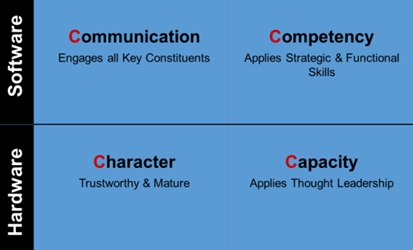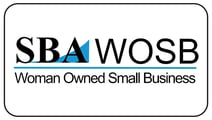Every organization has a clear need to develop future leaders – the longer-term viability of the business requires it. And, your strongest talent may leave if they aren’t being challenged, developed and don’t see a compelling career path. So, the questions organizations have to answer are:
Who can effectively lead for us in the future? and thus Who do we make a unique development investment in?

How each organization answers these questions is at the core of their talent development strategy. And, your longer-term success is dependent on getting the answers more-right-than wrong. The examples of companies’ fate being determined by leadership selection decisions are endless – how much different would GE have been if Jack Welch had not been identified and developed as a leader? Where would Apple be now after the passing of Steve Jobs had Tim Cook not been identified and developed in the years previous? And, how would PepsiCo have responded to immense market pressures if Indra Nooyi had not been ready to take the reigns as CEO in 2006?
These are the more public examples at the CEO level. However, the impact of succession and development is felt at multiple levels in every company. So, back to answering the question – who can effectively lead for us in the future?
Leader Success Profile = 4C’s From our research and work with companies across industries, we have found four universal elements in a framework that helps differentiate those that have true potential from those that are more likely to be challenged if put into larger roles. For many talent professionals, this framework has provided a simple and useful model to apply in their daily identification and development of leaders. The 4C Leader Profile helps leaders and professionals get beyond an unusable long list of competencies while ensuring they get beyond the bias and inaccuracies that result from a less structured and subjective approach to leader assessment.
The 4C Profile is both practical and empirically sound. The 4C Profile elements include:
Capacity – applies thought leadership
Character – is trustworthy & mature
Communication – engages all key constituents
Competency – applies strategic and functional skill
The order of these elements is important. When assessing, too many times we see leaders and HR professionals focus first, and sometimes solely, on a person’s competency. This is because a person’s functional skills and experience are easiest to assess and have a clear connection to a specific role. Competency is important, however, the other three C’s are critical in assessing and making accurate selection and development decisions.
Using the 4C Profile framework begins with assessing each candidate’s “hardware.” A person’s hardware is the raw material that is foundational to leadership success, and points to the kind of roles they can effectively inhabit over time. There is a strong positive relationship between a person’s Character and Capacity and the size and variety of roles, situations and environments that they can be successful in. Hardware defined = attributes and predispositions that are largely ingrained. It is our personal “wiring” and is difficult to change.
Competency
- Achieves strategic results by effectively managing seemingly conflicting priorities (Quality, Service, Cost & Growth)
- Understands their market and anticipates opportunities
- Equips people through effective delegation and coaching
- Builds people and organizations
- High financial acumen
- Has the functional skills required of the role
Communication
- Proactively builds relationships with all key constituents
- Is rarely surprised by new developments – is involved and aware of operations
- Appropriately conveys compassion and sensitivity
- Effectively manages conflict
- Energizes and inspires greater effort
- Articulates messages clearly and concisely
- Actively listens and responds
Character
- Is transparent with no hidden agenda
- Seeks out and responds well to feedback from others (both positive and negative)
- Takes personal accountability – owns failures and shares successes
- Has a will to win – does not get derailed
- Conveys stability and seasoned judgment
- Delivers on commitments
Capacity
- Learns quickly
- Quickly sees patterns and opportunities
- Identifies and manages the few core issues amongst multiple data and inputs=
- Provides greater insight and thought leadership to a group
- Views situations from various perspectives resulting in more effective solutions
- Actions exhibit good judgment
These indicators are helpful, however, you may want to edit or even add a few based on the uniqueness of the Character, Capacity, Communication and Competency requirements. For example, in one faith-based health care organization, they added servant’s heart and compassion to the list of Character and Communication indicators.
What unique elements does your company have? If you find yourself getting bogged down in the detail of the indicators when discussing an employee, I encourage you to move the assessment to a more general outcome-based litmus test – see the key question for each C in Figure 3 below. Figure 3 – 4C Profile Litmus Question.
Communication
Do you build productive relationships?
Competence
Do you have the functional and leadership skills to achieve results?
Character
Do you act in a way that builds trust and commitment?
Capacity
Can you find solutions to complex problems and opportunities?
The 4C Leadership Profile can help you and your leaders identify and develop great talent. However, be sure to make it the foundation of regular dialogue, and avoid the tragic trap of coming to a final conclusion on people. You should regularly revisit your assumptions and be willing to learn more, with the focus of figuring out how you can put each person in the position to be as successful as they can be. There are a number of additional tools that can be used to assess an employee or candidate using the 4C profile. As a firm we have helped a number of companies both structure the approach, facilitate the process, and apply validated assessment instruments for greater precision and development focus.
Written by Joe Frodsham, President and Owner of Career Management Partners.




